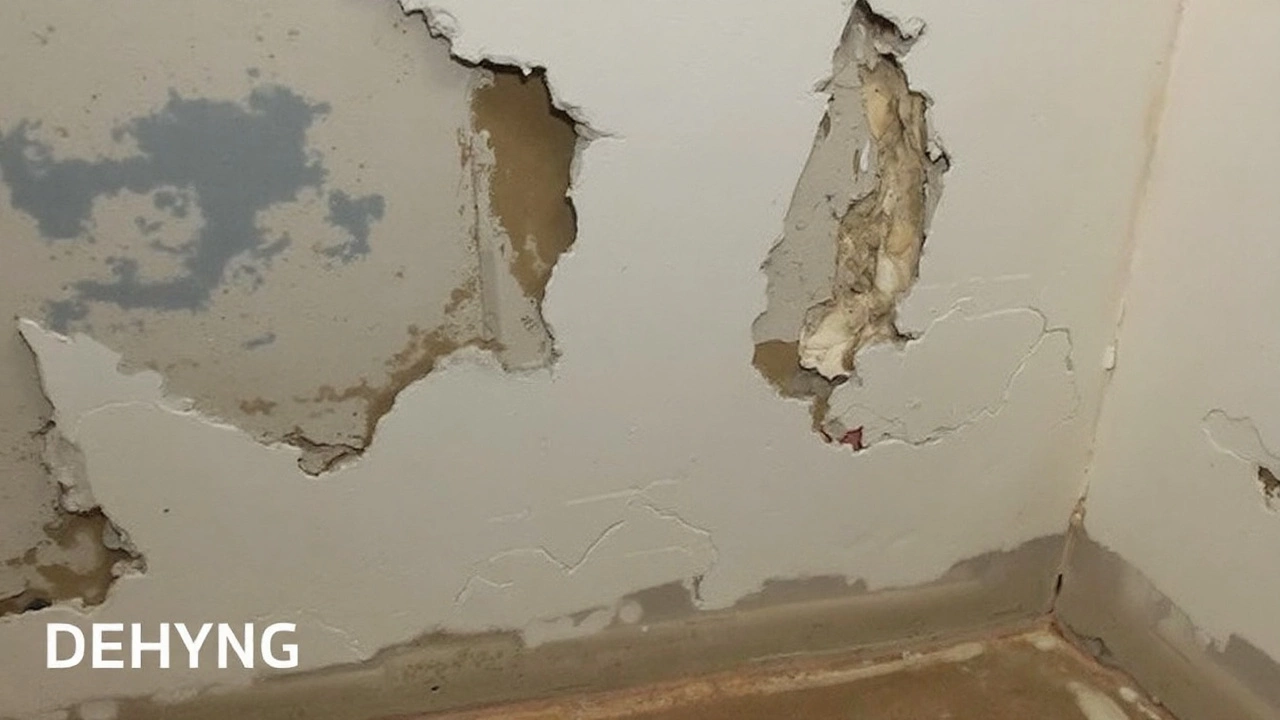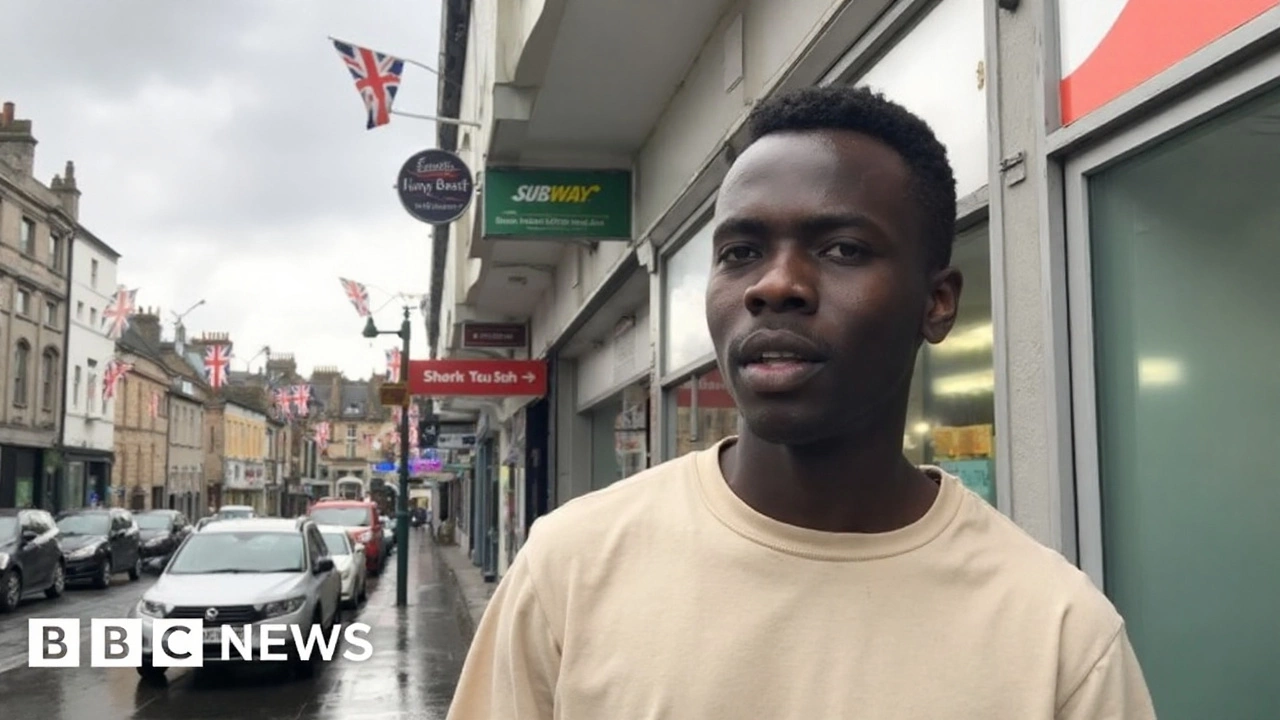A calm voice in a heated debate
On streets where bunting and banners have become more common, a refugee in Shrewsbury has offered a simple message: don’t panic. Andrew Kueth, who was granted asylum and now lives in the town, says the display of national flags doesn’t frighten him. “No one should feel intimidated by Britain putting their flags out,” he said, cutting through a noisy debate that now stretches from local Facebook groups to national headlines.
His comment lands at a tense moment. Flags—Union Jacks and St George’s crosses—are popping up on homes, shopfronts and even lampposts. In some places they’re part of football season rituals or local celebrations. In others, they’ve become a backdrop to protests near hotels housing asylum seekers. That mix of pride and politics is why a piece of fabric on a pole can quickly become a flashpoint.
The question many communities are wrestling with is intent. A street dressed for a sporting tournament reads one way. A sudden cluster of flags outside accommodation used by asylum seekers reads another. In Falkirk, central Scotland, a protest outside a site linked to asylum housing drew a mix of attendees—from worried locals to people aligned with far‑right figures—many carrying the Union flag. The scene wasn’t unique. Similar gatherings across Britain have folded the flag into wider arguments about migration, housing and public services.
Kueth’s take adds nuance. He doesn’t dismiss concerns about intimidation outright; he says not every flag signals hostility. For some long‑time residents, especially veterans and football supporters, the flag is a straightforward symbol of belonging. For new arrivals, context matters: repeated displays placed near their housing can feel targeted, even if no words are exchanged. That gap in perception is where tensions grow.
Local authorities insist there’s a practical side to all this. Shropshire Council says it won’t actively “police” flags unless there’s a clear reason to step in. The exception is safety and maintenance. Flags strapped to lampposts, for example, raise questions about whether brackets are secure, whether they obstruct signs or sightlines, and who removes them if they become torn or hazardous. It’s the unglamorous, nuts‑and‑bolts work of public space management—but it’s often what determines whether a display stays or comes down.
What does the law say? In England, many flags—national, regional, and those tied to sports or civic events—can be flown without formal planning consent if they meet basic conditions. It’s different on the highway: anything attached to street furniture usually needs permission from the authority responsible, mainly to protect drivers, cyclists and pedestrians. Separately, criminal law draws a line on behaviour. Displaying a flag is not an offence; using it alongside threatening, abusive or harassing conduct can be.
That legal framework sits against a practical reality: thousands of asylum seekers have been placed temporarily in hotels while the Home Office works through cases. The use of hotels has been a lightning rod. Residents near these sites often raise real, local issues—pressure on GP surgeries, school places, litter, or fear of anti‑social behaviour. Campaigners counter that many concerns are stoked online and that a small number of agitators try to turn civic worries into hostility toward people who are legally seeking protection. Both dynamics can exist at once.
It’s also true that the flag’s meaning has shifted over time. The St George’s cross in particular has bounced between football terraces, street parties and, at times, fringe politics. In the 1990s and early 2000s, it was often seen as a hooligan emblem; by the 2018 and 2022 World Cups it had largely moved back into mainstream family‑friendly territory. The Union Jack has gone through similar cycles—from royal celebrations and wartime remembrance to culture‑war shorthand and back again.
Shrewsbury’s situation mirrors that national picture. Flags have appeared on lampposts and outside homes across parts of Shropshire. Most pass without comment. Some spark arguments on neighbourhood forums about whether it’s harmless pride or a pointed message. The council’s stance—light‑touch unless safety requires action—tries to balance free expression with keeping the public realm tidy and safe.
Policing follows a similar logic. Officers tend to focus on behaviour rather than symbols. March with a flag? Lawful. Block roads without permission, threaten people, or aim a display at a specific group to menace them? That’s where enforcement kicks in. The distinction can feel fine‑grained on a busy street, but it’s the one UK law relies on.
Behind the symbols are quieter facts. Many asylum seekers placed in market towns and suburbs simply keep their heads down, wait for interviews, and try to figure out buses and GP registrations. Kueth speaks to that day‑to‑day reality. He says a neighbour’s flag is less important than whether people say hello at the bus stop. Normal social contact reduces suspicion on both sides far faster than any policy announcement.
There is another wrinkle: flags put up and left to decay. Ragged fabric and broken brackets irritate everyone, regardless of politics. Councils across the UK have asked residents to be mindful: remove temporary flags after events, avoid attaching anything to traffic lights or protected structures, and steer clear of cables and overhead lines. It’s the sort of guidance that, if followed, lowers the temperature without touching the bigger argument about identity.
Where does this go next? Much depends on what happens away from the flagpoles. The Home Office has been trying to reduce its use of hotel rooms as asylum accommodation, which could ease flashpoints outside specific sites. Some councils are drafting clearer local protocols for temporary displays—especially during major tournaments—so everyone knows the rules before emotions run high. Community groups, faith leaders and football clubs have also stepped in to host small events that bring people into the same room rather than opposite sides of a street.
In the end, Kueth’s message is neither a rebuke nor an endorsement. It’s an invitation to separate symbol from intent—and to judge displays by what accompanies them. A flag flying during a summer of sport is part of Britain’s public life. A flag used to front a campaign of harassment is something else entirely. Communities will keep wrestling with that distinction. For now, one Shrewsbury resident is asking his neighbours not to fear what’s on the pole, but to watch how people act underneath it.

Flags, protests and the law: where the lines sit
- On private property, most national and regional flags can be flown without planning consent if they meet size and placement limits.
- On highways and lampposts, separate permission and safety checks are usually required from the local authority.
- Carrying or displaying a flag is lawful; threatening or harassing conduct is not.
- Councils can remove unsafe or obstructive installations; police can intervene where there’s risk of disorder or targeted intimidation.
